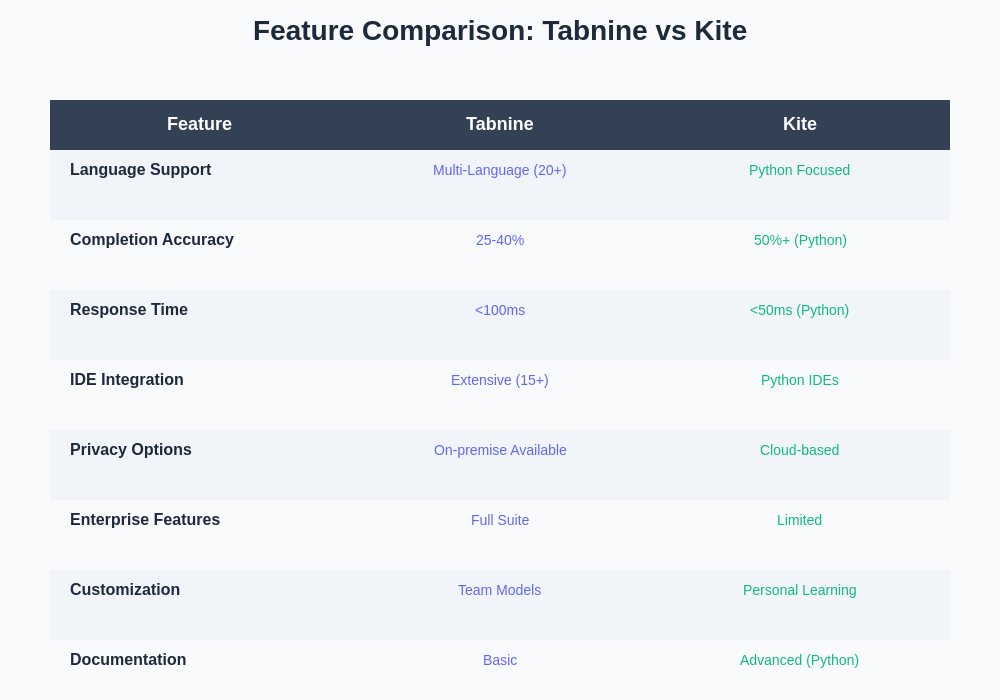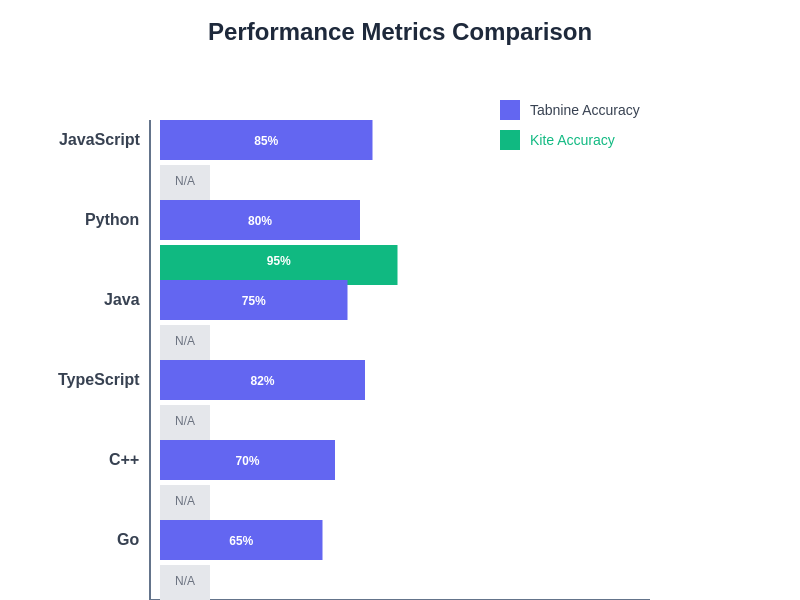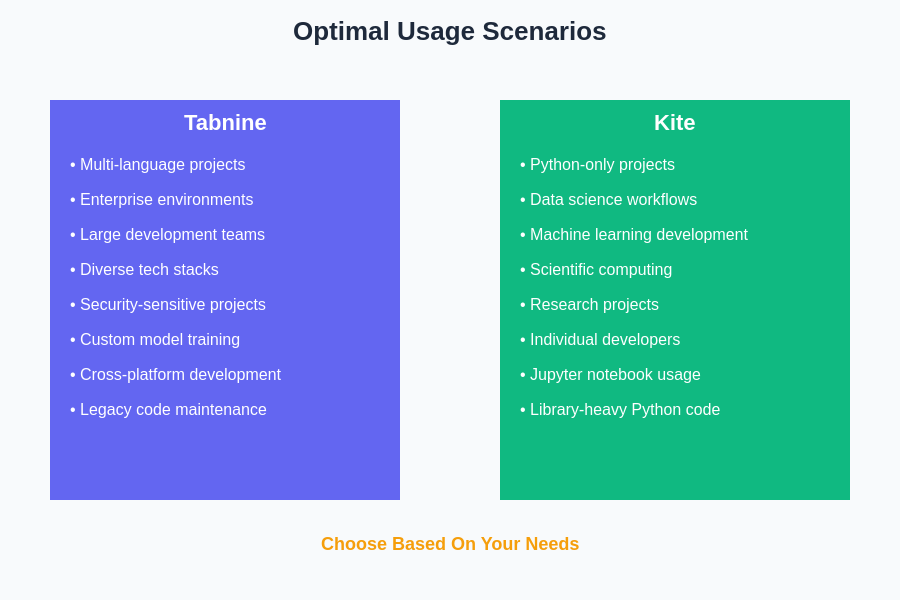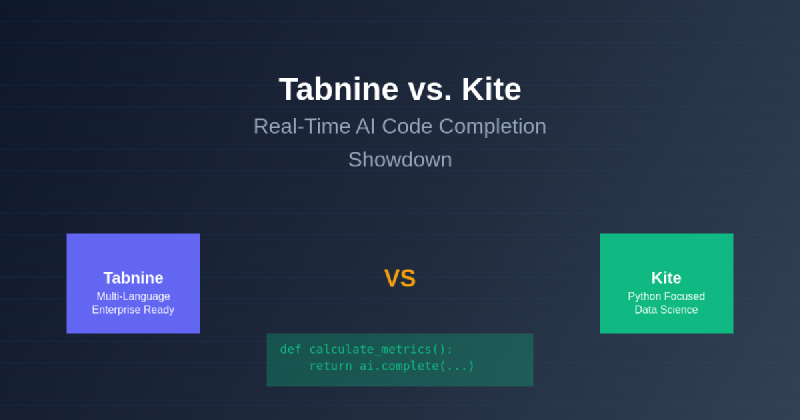The realm of AI-powered code completion has witnessed remarkable evolution, with intelligent assistants transforming how developers write, debug, and optimize code. Among the pioneering solutions in this space, Tabnine and Kite have emerged as formidable competitors, each offering unique approaches to enhancing developer productivity through sophisticated machine learning algorithms and real-time code suggestions. This comprehensive analysis explores the nuanced differences between these two powerful tools, examining their capabilities, performance characteristics, integration options, and overall impact on modern software development workflows.
Stay updated with the latest AI development trends as the landscape of code completion tools continues to evolve rapidly, bringing new innovations and capabilities that reshape how developers interact with their development environments. The choice between different AI code completion solutions has become increasingly critical for development teams seeking to maximize productivity while maintaining code quality and consistency across their projects.
Understanding AI Code Completion Technology
The foundation of modern AI code completion rests upon sophisticated machine learning models trained on vast repositories of source code, enabling these tools to understand contextual patterns, predict developer intent, and generate relevant code suggestions in real-time. Both Tabnine and Kite leverage deep learning architectures to analyze existing code structures, identify common patterns, and provide intelligent completions that extend beyond simple syntax suggestions to encompass complex logic implementations and architectural patterns.
The evolution from traditional autocomplete mechanisms to AI-powered completion represents a paradigm shift in developer tooling, where static keyword matching has been replaced by dynamic context analysis that considers variable names, function signatures, import statements, and broader code architecture to deliver increasingly accurate and useful suggestions. This technological advancement has fundamentally altered the development experience, reducing cognitive load and enabling developers to focus on higher-level problem-solving rather than remembering exact syntax or API details.
Tabnine: The Comprehensive AI Assistant
Tabnine has established itself as a comprehensive AI coding assistant that supports an extensive range of programming languages and development environments. The platform’s strength lies in its versatility and deep integration capabilities, offering both cloud-based and on-premises deployment options that cater to diverse organizational requirements and security considerations. Tabnine’s machine learning models have been trained on billions of lines of open-source code, enabling the system to provide contextually relevant suggestions across multiple programming paradigms and frameworks.
The platform’s architecture emphasizes privacy and security, offering enterprise-grade solutions that can operate entirely within organizational boundaries while maintaining the sophisticated prediction capabilities that make AI code completion valuable. Tabnine’s approach to code analysis extends beyond simple pattern matching to include semantic understanding of code intent, enabling more accurate predictions and reducing the likelihood of irrelevant or potentially harmful suggestions.
Experience advanced AI coding assistance with Claude for complex programming tasks that require sophisticated reasoning and comprehensive code analysis capabilities. The integration of multiple AI tools creates a powerful development ecosystem that addresses various aspects of the software development lifecycle from initial coding through testing and deployment.
Kite: Focused Excellence in Python Development
Kite has carved out a distinctive niche by focusing primarily on Python development, delivering specialized expertise and highly optimized performance for Python developers and data scientists. This focused approach has enabled Kite to develop deep understanding of Python-specific patterns, libraries, and frameworks, resulting in exceptionally accurate code completion for Python projects. The platform’s specialization extends to popular Python libraries such as NumPy, Pandas, and TensorFlow, providing intelligent suggestions that understand the nuances of data science and machine learning workflows.
The concentrated focus on Python has allowed Kite to implement sophisticated features such as intelligent documentation lookup, function signature help, and context-aware parameter suggestions that demonstrate deep understanding of Python’s ecosystem. While this specialization limits Kite’s applicability to multi-language projects, it provides unparalleled depth and accuracy for Python-centric development environments, particularly those involved in data analysis, scientific computing, and machine learning applications.
Performance and Accuracy Comparison
The performance characteristics of Tabnine and Kite reveal important differences in their architectural approaches and optimization strategies. Tabnine’s multi-language support necessitates more complex model architectures that can adapt to different programming languages and contexts, resulting in slightly higher resource consumption but broader applicability across diverse development scenarios. The platform’s completion accuracy varies across different languages, with particularly strong performance in popular languages like JavaScript, Python, Java, and TypeScript.
Kite’s Python-focused approach enables more aggressive optimization and specialized model tuning that results in faster response times and higher accuracy rates for Python code completion. The platform’s deep understanding of Python semantics allows for more sophisticated context analysis and prediction accuracy that often exceeds general-purpose solutions. However, this performance advantage is limited to Python development scenarios, making direct performance comparisons challenging due to the different scope of applicability.
Integration and Development Environment Support
The breadth of development environment integration represents a crucial factor in the practical utility of AI code completion tools. Tabnine offers extensive integration support across major IDEs and text editors, including Visual Studio Code, IntelliJ IDEA, Eclipse, Sublime Text, Vim, and many others. This comprehensive integration approach ensures that developers can maintain their preferred development environments while benefiting from AI-powered code completion capabilities.
Kite’s integration strategy focuses on delivering exceptional experiences within supported environments, primarily emphasizing Visual Studio Code, PyCharm, and other Python-centric development tools. While the range of supported environments is more limited than Tabnine’s offerings, Kite’s integrations tend to be deeper and more feature-rich within supported platforms, offering capabilities such as advanced documentation panels, intelligent code navigation, and integrated debugging assistance.
Privacy and Security Considerations
Security and privacy concerns represent critical evaluation criteria for enterprise adoption of AI code completion tools. Tabnine addresses these concerns through multiple deployment options, including fully on-premises solutions that ensure code never leaves organizational boundaries. The platform offers enterprise-grade security features, including custom model training on proprietary codebases, advanced access controls, and compliance with industry security standards.
Kite’s approach to privacy and security emphasizes transparency and user control, providing clear information about data usage and offering options to limit or disable data collection. The platform’s Python focus enables more targeted security measures and specialized compliance features relevant to data science and research environments where code confidentiality and intellectual property protection are paramount.
Enhance your research capabilities with Perplexity for comprehensive analysis of security considerations and best practices when implementing AI code completion tools in enterprise environments. The evaluation of security features requires thorough understanding of organizational requirements and potential risks associated with different deployment models.
Customization and Personalization Features
The ability to customize and personalize AI code completion behavior represents an important differentiator between platforms. Tabnine offers sophisticated customization options that allow organizations to train models on their specific codebases, enabling the system to learn internal coding patterns, architectural preferences, and domain-specific conventions. This customization capability extends to team-level preferences, style guide enforcement, and integration with existing code review and quality assurance processes.
Kite’s customization features focus on optimizing the Python development experience through intelligent learning from individual coding patterns and project-specific contexts. The platform adapts to developer preferences over time, learning from accepted and rejected suggestions to improve future recommendations. While less comprehensive than Tabnine’s enterprise customization options, Kite’s personalization features provide effective adaptation to individual developer workflows and preferences.
Language Support and Ecosystem Integration
The scope of programming language support fundamentally shapes the applicability of different AI code completion solutions. Tabnine’s comprehensive language support encompasses dozens of programming languages, including JavaScript, TypeScript, Python, Java, C++, C#, Go, Rust, PHP, and many others. This broad support enables consistent AI assistance across polyglot development environments and complex projects that involve multiple programming languages and frameworks.
Kite’s specialized focus on Python provides unmatched depth within its supported ecosystem, including sophisticated understanding of Python frameworks such as Django, Flask, FastAPI, and scientific computing libraries. The platform’s deep integration with Python’s package ecosystem enables intelligent suggestions for library-specific patterns and best practices that general-purpose solutions may miss or handle less effectively.
Cost Structure and Value Proposition
The economic considerations surrounding AI code completion tools involve evaluating both direct costs and productivity benefits across different organizational contexts. Tabnine offers tiered pricing models that range from free individual plans to comprehensive enterprise solutions with advanced features and dedicated support. The platform’s value proposition centers on broad applicability and comprehensive feature sets that can benefit diverse development teams working across multiple languages and platforms.
Kite’s pricing strategy reflects its focused approach, offering competitive rates for Python developers while providing specialized features that deliver significant value for data science and machine learning teams. The platform’s cost-effectiveness is particularly pronounced in Python-heavy environments where the specialized capabilities justify the investment through improved productivity and code quality.
Community and Developer Ecosystem
The strength of community support and developer ecosystem engagement significantly impacts the long-term viability and continuous improvement of AI code completion platforms. Tabnine has cultivated a broad developer community that spans multiple programming languages and development methodologies, resulting in diverse feedback, feature requests, and use case examples that drive platform evolution. The community’s diversity contributes to robust testing across different scenarios and ensures that the platform continues to meet evolving developer needs.
Kite’s community is more specialized but highly engaged within the Python ecosystem, providing valuable feedback on data science workflows, machine learning development patterns, and scientific computing requirements. This focused community engagement enables rapid iteration on Python-specific features and ensures that the platform remains closely aligned with the needs of its target user base.
Performance Metrics and Benchmarking
Objective performance evaluation of AI code completion tools requires consideration of multiple metrics including completion accuracy, response latency, resource consumption, and integration stability. Tabnine’s performance across different languages shows consistent competency with particularly strong results in widely-used languages where training data is abundant. The platform’s completion accuracy typically ranges from 25-40% depending on language and context complexity, with response times generally under 100 milliseconds for most completion scenarios.
Kite’s specialized optimization for Python environments enables superior performance metrics within its domain of expertise, often achieving completion accuracy rates exceeding 50% for common Python patterns and maintaining consistently low latency even in complex data science environments. The platform’s resource efficiency in Python contexts often surpasses general-purpose solutions due to targeted optimization and specialized model architectures.

The comprehensive feature analysis reveals distinct strengths and positioning strategies for each platform, with Tabnine emphasizing breadth and enterprise capabilities while Kite focuses on depth and specialized Python expertise. These different approaches result in complementary value propositions that serve different segments of the development community.
Future Development and Innovation Trajectories
The roadmap and innovation direction of AI code completion platforms provide insights into their long-term strategic positioning and potential evolution. Tabnine’s development trajectory emphasizes expanding language support, improving enterprise features, and enhancing integration capabilities across diverse development environments. The platform’s research and development efforts focus on advancing multi-language understanding, improving context awareness, and developing more sophisticated customization capabilities.
Kite’s innovation strategy centers on deepening Python expertise, expanding support for emerging Python frameworks, and developing specialized features for data science and machine learning workflows. The platform’s focused approach enables rapid advancement in Python-specific capabilities while maintaining the depth of expertise that differentiates it from general-purpose solutions.

The performance analysis demonstrates the trade-offs inherent in different architectural approaches, with Tabnine providing consistent multi-language support while Kite delivers exceptional performance within its specialized domain. These metrics highlight the importance of aligning tool selection with specific development requirements and language preferences.
Real-World Implementation Considerations
Practical implementation of AI code completion tools requires careful consideration of organizational requirements, existing development workflows, and integration complexity. Tabnine’s broad compatibility and flexible deployment options make it suitable for diverse organizational contexts, from small development teams to large enterprises with complex security requirements. The platform’s gradual adoption path allows teams to evaluate effectiveness across different projects and programming languages before committing to comprehensive deployment.
Kite’s implementation is most effective in Python-centric environments where the platform’s specialized capabilities can deliver maximum value. Organizations with significant Python development activities, particularly those involved in data science or machine learning, often experience substantial productivity improvements that justify the focused nature of the solution. The implementation process is typically streamlined due to the platform’s targeted approach and deep integration with Python development tools.

The optimal usage scenarios clearly delineate the contexts where each platform provides maximum value, helping organizations make informed decisions based on their specific development patterns, team composition, and project requirements. Understanding these scenarios is crucial for achieving optimal return on investment from AI code completion tools.
Conclusion: Choosing the Right Solution
The decision between Tabnine and Kite ultimately depends on specific organizational requirements, development language preferences, and strategic priorities. Tabnine offers comprehensive multi-language support and enterprise-grade features that make it ideal for diverse development environments and large organizations with varied programming language requirements. The platform’s flexibility and broad applicability provide insurance against changing technology stacks while delivering consistent AI assistance across different development contexts.
Kite represents the optimal choice for Python-focused development teams, particularly those involved in data science, machine learning, or scientific computing where the platform’s specialized expertise delivers exceptional value. The concentrated focus on Python enables capabilities and performance levels that general-purpose solutions typically cannot match, making Kite the preferred option for organizations where Python development represents a significant portion of their engineering activities.
The evolution of AI code completion technology continues to accelerate, with both platforms actively developing new capabilities and improving existing features. The choice between these solutions should consider not only current requirements but also future development plans, organizational growth trajectories, and the evolving landscape of programming languages and development methodologies that will shape software development in the coming years.
Disclaimer
This article provides comparative analysis based on publicly available information and general industry knowledge. The effectiveness of different AI code completion tools may vary significantly depending on specific use cases, programming languages, development environments, and individual developer preferences. Readers should conduct thorough evaluation and testing within their specific contexts before making implementation decisions. The features and capabilities of both platforms continue to evolve, and current information should be verified through official documentation and direct evaluation.
